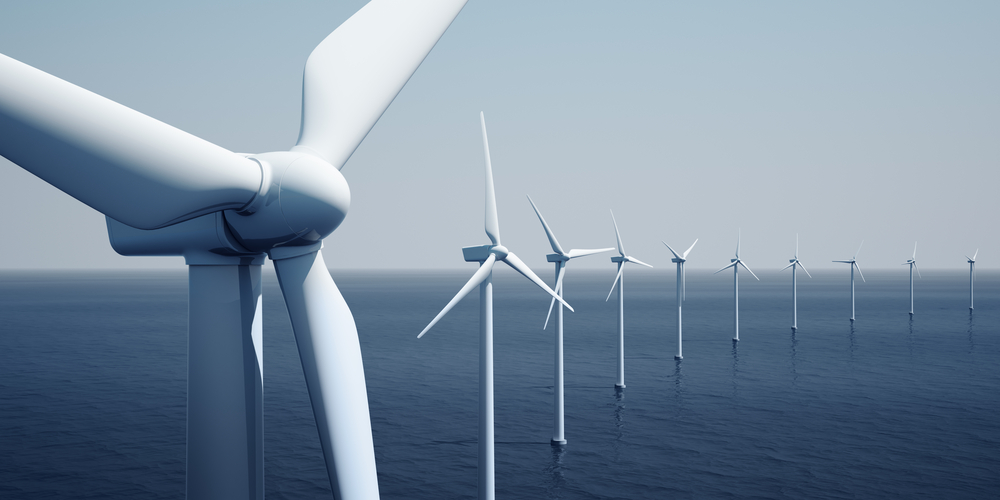
Britain: a big fan of wind energy?
Great weather, we’re having…
A few years ago, a survey found that nine in ten Britons had talked about the weather in the last six hours. It is a well-worn but true cultural trope that Britain is a country obsessed by the weather, Rhod Gilbert, the comedian, once joked “In the Bible, God made it rain for forty days and forty nights; and that was still the best summer we had!” In fact, in Britain our severe doubts about the existence of sunlight (we know it happens elsewhere) has led us to become active proponents of wind energy. By 2030 Britain plans to generate a third of its electricity needs from wind power, while Scotland, in keeping with its forward thinking on clean energy was able to generate double its domestic energy need from wind energy in the first six months of 2019. This article aims to have a look at the recent developments in the UK wind energy sector.
Wind energy is winning the price war
A long-term challenge for renewable energy in the UK has focused on cost. As with most things British there is a contradiction to resolve, most British people are willing to pay more for a better service, but we’re also completely baffled by the concept of tipping even in situations where we have received a better service. For a long time, this was a problem for renewable energy – it was undoubtedly better for the planet but also more expensive, in an era of price comparison sites and lower quotes there was a real problem for consumers. However, wind energy has now turned a corner in the UK, the recent “contracts for difference” auction for Offshore Wind energy saw 6GW awarded with Forthwind consortium’s Dogger Bank project and Innogy’s Sofia Offshore Wind Farm winning 5GW of the 6GW. The major talking point was the winning price of £40 per Megawatt Hour. That was a third lower than the 2017 auction, the price takes it below the current wholesale cost paving the way for offshore wind energy to provide power cheaper than gas plants.
Mixed results for offshore innovation and more investment needed.
The UK has historically been a great centre for innovation in wind energy e.g. the Dogger Bank project will be home to the world’s largest wind turbines, standing 220m tall with blades more than 100m long. However, there is a genuine fear that Britain has let an early advantage in floating wind energy disappear. Scotland is currently home to 56% of the world’s floating wind capacity and the UK was the home of the first floating wind scheme. However, a recent report from Strathclyde University suggests that Britain has fallen behind in the technology and is in serious risk of limiting future floating offshore schemes. It would be very timely if this trend was reversed through significant government support. This support should also be linked to improving the accessibility of energy storage solutions for offshore energy, this would expand upon the great work already done by the ORE Catapult’s Grid Connection Support Series.
Don’t forget onshore wind
The UK is also not free of an issue that effects the wider European onshore wind sector, that of old wind farms. Much of the UKs onshore capacity was built in the late 1990s with an expected lifespan of 20-25 years, this is creating a potential energy gap the UK’s 2030 renewable energy target. The situation is not too late, around 8GW needs replacing but with the time available there is scope to replace it with 12GW of new onshore wind. The positive aspect for the UK in this respect is that the new turbines would draw upon significant technological and energy efficiency improvements that have come to the sector in recent years.
However, the outlook isn’t all bad for onshore wind. There are some exciting developments underway, in particular from the commercial sector. Amazon has just agreed the largest corporate wind deal at 50MW from the new wind farm on the Kintyre Peninsula while Tesco has signed three PPAs with EDF for clean energy from two wind farm schemes and several solar installations. Elsewhere Lidl, another retailer, is rolling out EV charging for its customers and using clean energy to power the facility. A general trend amongst business to promote clean energy will likely see PPAs help provide developers with the stability to build more wind capacity.
So, where does that leave Britain? As a country historically the UK has been a great advocate for wind energy, but there are challenges ahead. In particular there is a real need to make sure that the sector receives the right level of support to replace existing infrastructure and continue to grow.
This article comes from the Green Recruitment Company’s newsletter the Green Insider – the Autumn Edition can be found on the trends page of the Green Recruitment Company website.
Please feel free to leave a comment with your thoughts and if you would like to arrange a call, you can reach me on my contact details below:
Andrew Green - Head of Wind and Energy Solutions
T: +44 (0) 203 640 2130
E: andrew@greenrecruitmentcompany.com
